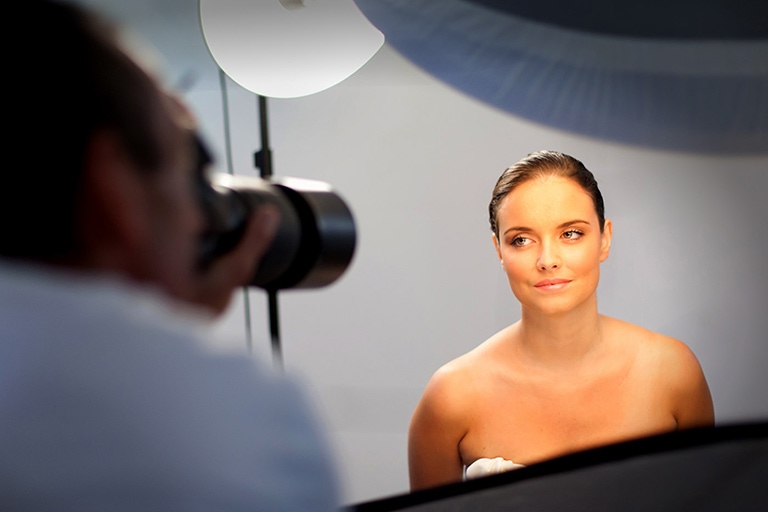How To Choose A Great Photographer For Your Business
Related Articles
When you take photos for commercial use, it is commercial photography. In this case, “commercial” means making money or selling or otherwise for business use. Commercial photography is used for:
- Merchandising
- Product placement
- Professional Headshots
- Sales Pitches
- Advertising
- Fitness Modeling
It may also be used to create:
- Press photos
- Advertorials
- Menus
- Corporate brochures
- Business cards
- Leaflets
Using commercial photography for product promotion and sales
You can use commercial photography to help you sell your product or service. Say you want to sell a single product or a line of products. It’s wise to have some excellent commercial photos for presentation. You’ll want sharp images that can be printed up nicely in newspapers, brochures and other ad mediums. You may also like photos that are focused on product design and features. Say you are selling iPads with rounded edges and want to show off this feature. You take photos that draw attention to this feature. You might also do some photos that focus on product function and use.
Use commercial photography to promote your business
If you have a business, you want people to visit your website and spend their hard-earned dollars. Using commercial photography to present and promote your business or firm is brilliant. Good, clear photos that show your business at its best can be reproduced on business cards, flyers, billboards, and what have you. Having great photos on hand helps you get good media coverage and the promotion that comes with it. You might also want photos of yourself and/or your staff and co-workers. These can be used to introduce your business to others and show how friendly, skilled, smart and professional you are. Don’t be shy about this. There is nothing narcissistic about blowing your own horn when promoting your business. It is the way to success.
Create attractive menus with commercial photography
A menu can look much more appetizing and appealing when it includes nice-looking, appetizing photos of the food. You need a skilled professional photographer and a food stylist for this photo shoot. You’ll want your dishes to be representative of the food you serve, and you’ll want it to look its best.
Commercial photography has both portrait and fashion applications
In fashion photography, commercial images are taken for use in magazine advertorials. They may also be used in catalogues. Clothing is an essential consideration in this sort of commercial photography. The clothing is considered a working prop that adds dynamism to a photograph. Naturally, the clothes can be a part of your ad.
Portrait photography also has a commercial element. This is especially true when it comes to wedding shoots. A wedding photographer certainly does portrait photography; however, it must also have a commercial element. For example, the photographer must take photos highlighting the bride’s complete ensemble, from the dress to shoes to the tiara to the bouquet. The bride must also stand out as the centre of attention.
The bottom line is commercial photography is used for promotion
These days many people like to behave like they have talents that they don’t. One area in which this sort of presumption is very popular is photography. DSLR cameras are quite affordable now, so everybody has one or two. This leads them to think of and introduce themselves to others as “professional” photographers. These people believe that their sophisticated equipment entitles them to charge lots of money for photos and expect to be treated as professionals. Still, there’s much more to being a photographer than buying a camera. How can you tell if you are dealing with a professional photographer or a poser? Here is some advice to help you sort the wheat from the chaff.
How to tell a professional photographer from an amateur
An amateur usually wants to make money fast. Of course, real photographers like to make money fast, too, but that is not their main objective. A real professional is invested in creating high-quality photography first. He or she is concerned with how the image is captured, what emotion it evokes, whether or not it can be considered art, etc.
An amateur is mostly focused on the money. He or she will talk about rates, pull out contracts for clients to sign, and try to hard sell clients into buying things they didn’t ask for.
A true professional photographer wants to do a good business and make money, naturally; however, it is apparent that a real professional is working in photography because he or she loves the art and craft of it.
A professional photographer is always studying and learning. He or she will take a great deal of time to study other photographers’ work, take courses, and read books on photography. They take time to practice, improve and hone their knowledge, skills and abilities.
An amateur tends to present an air of knowing it all. They do not take the time for self-improvement because they do not realize it is always necessary. They feel they have already arrived at professional status and there is no room for improvement.
A professional knows that photography is a growing field and an art form. There is always something new to learn. They feel they must evolve and engage in self-improvement to become the best photographers.
If an agent turns you down, learn from the situation. Find out why by asking them questions to understand if you need to work on anything before meeting with another agent. And, don’t let the rejection get to you because you’re learning. What one agent is looking for is not what another agent is looking for, so keep working on getting that contract in place.
A professional photographer is recognized by their unique style
A true pro will have his or her style and way of doing things. Amateurs imitate what they have seen without developing their style. Their advertising materials may even say, “Get results just like…” followed by the name of a real professional!
Having a unique style is very important to a true professional. It defines an artist and makes him or her different from all others. A unique style will attract clients whose personal style meshes and resonates with the true professional photographer.
How to find a commercial photographer
If you are looking for a good commercial photographer, check your local phone book and newspapers listings. You may find excellent listings for local photographers there. Also, do a Google search and have a look at their website and view their work. A professional photographer will have a website that complements their work.
GET OUR FREE GUIDES
STYLE GUIDES
Our Style Guide will help you choose the right outfits for your photo session.
POSING GUIDES
Our Posing Guide is full of tips and tricks on how to move and feel confident in front of the camera.
Ready to Start?
Get In Touch

